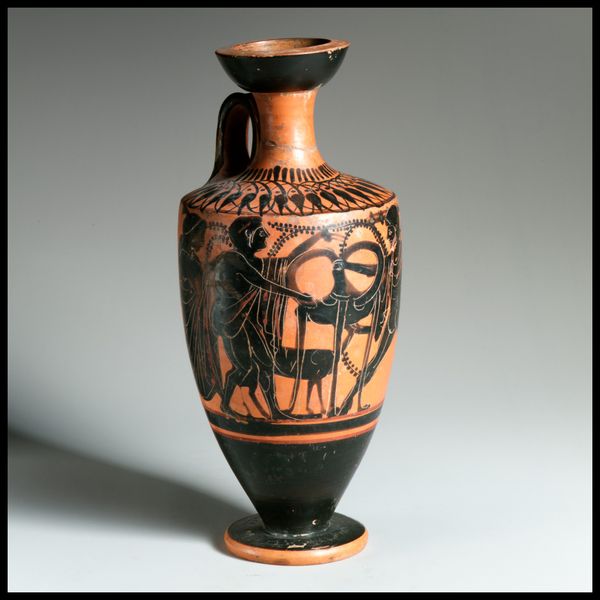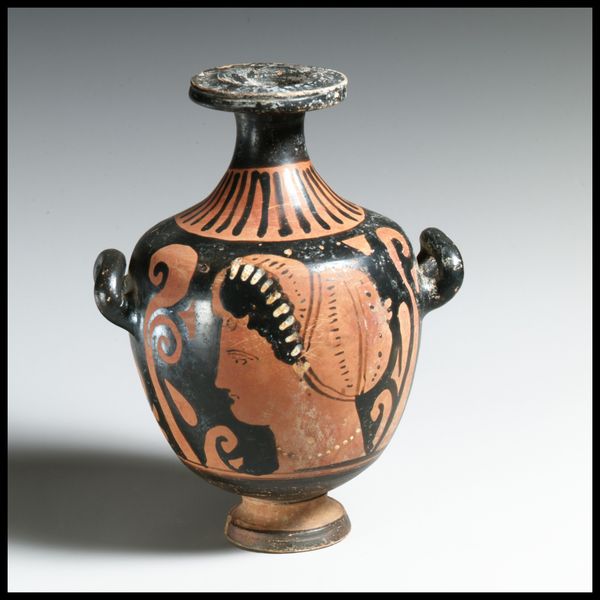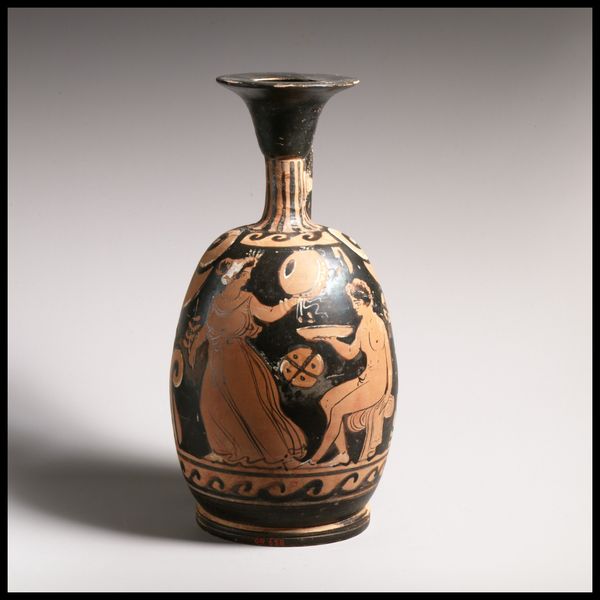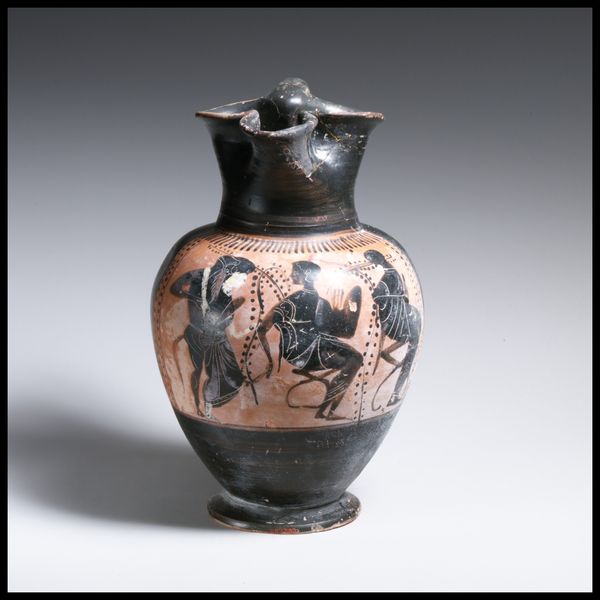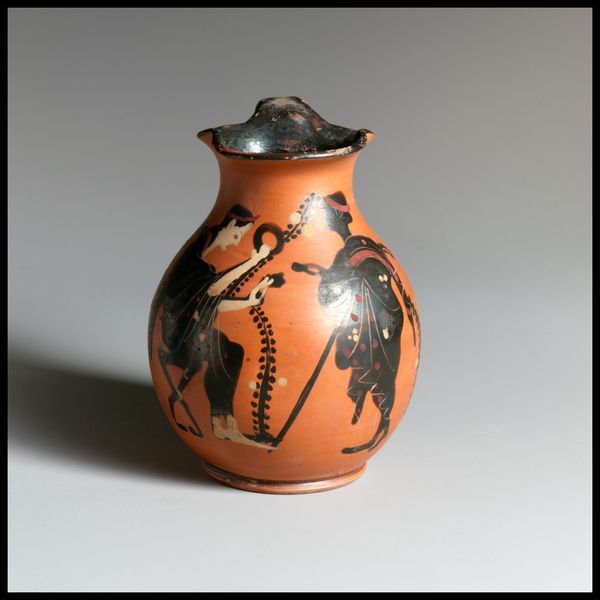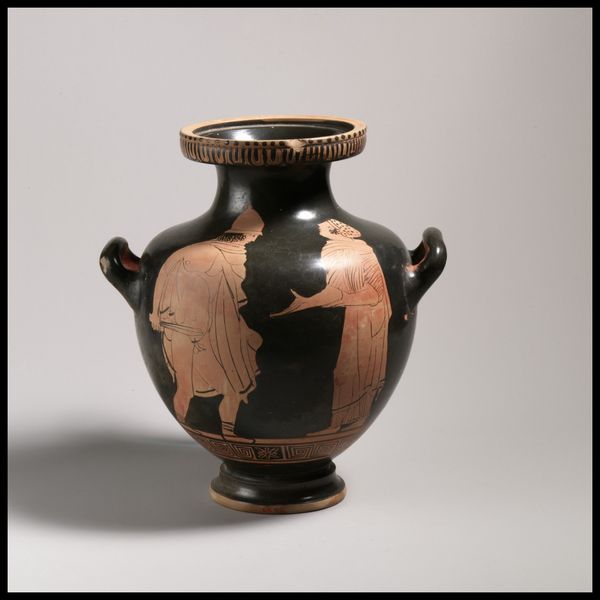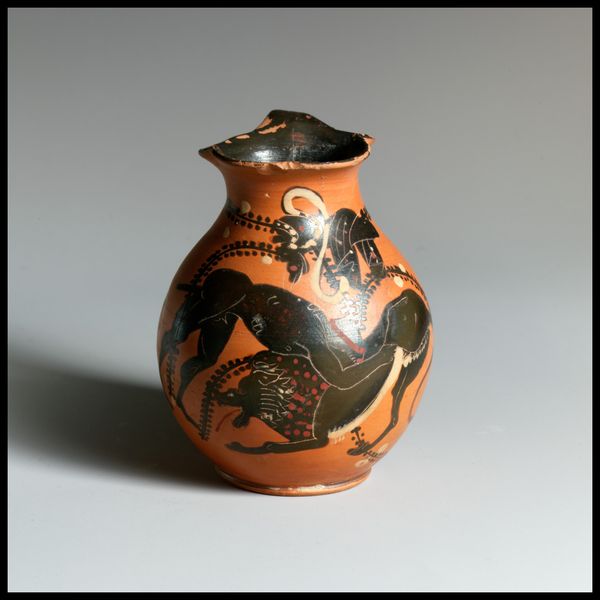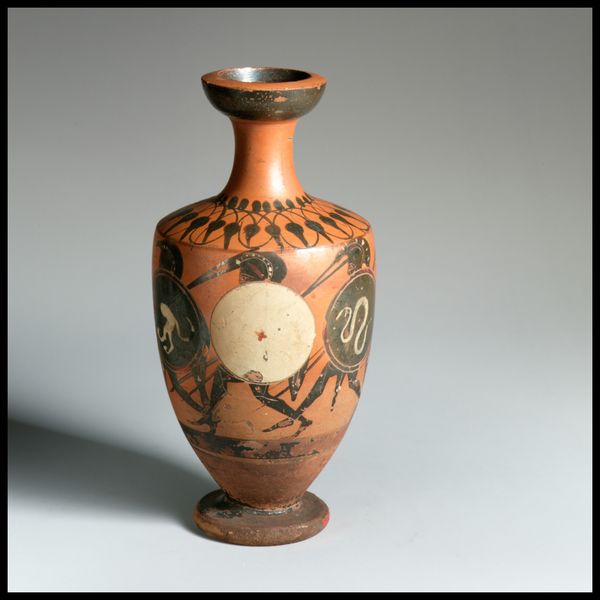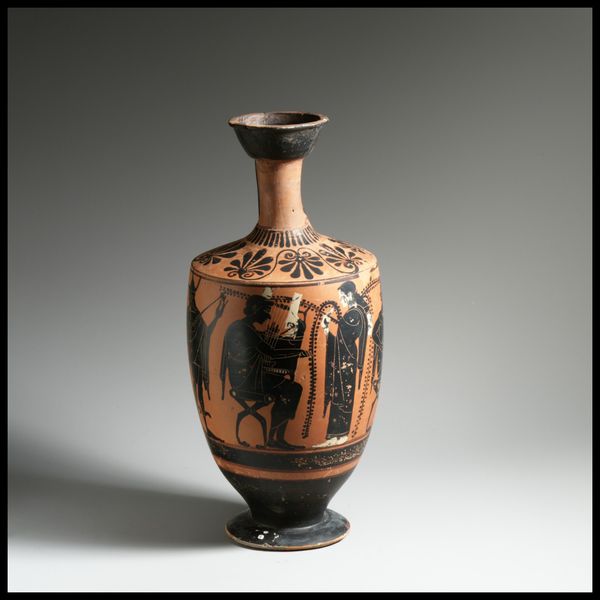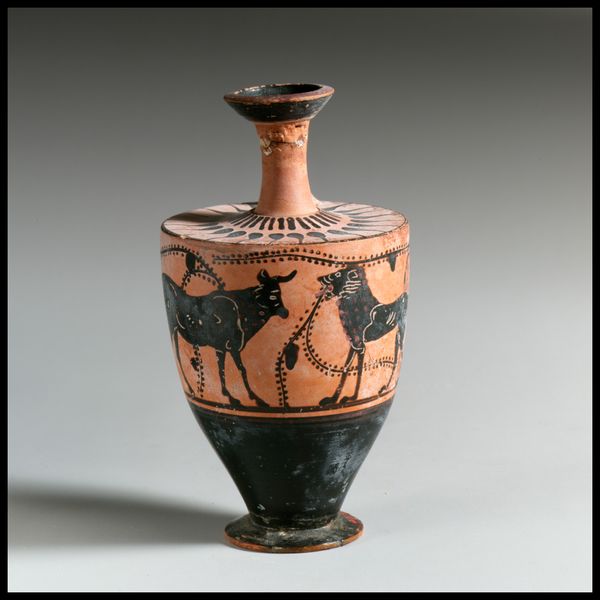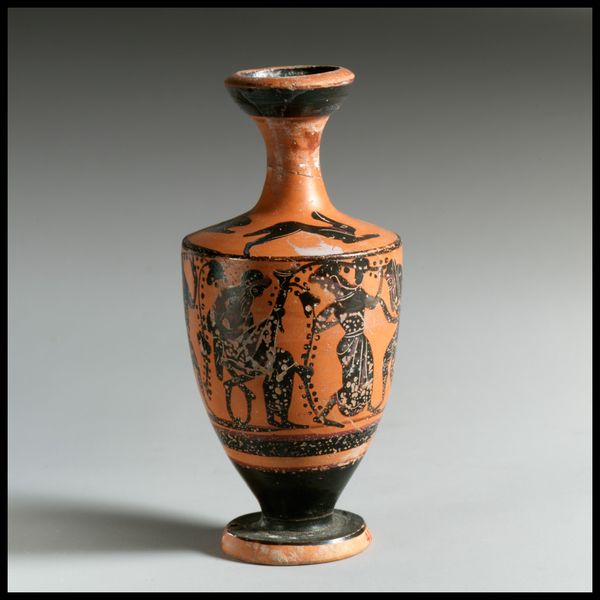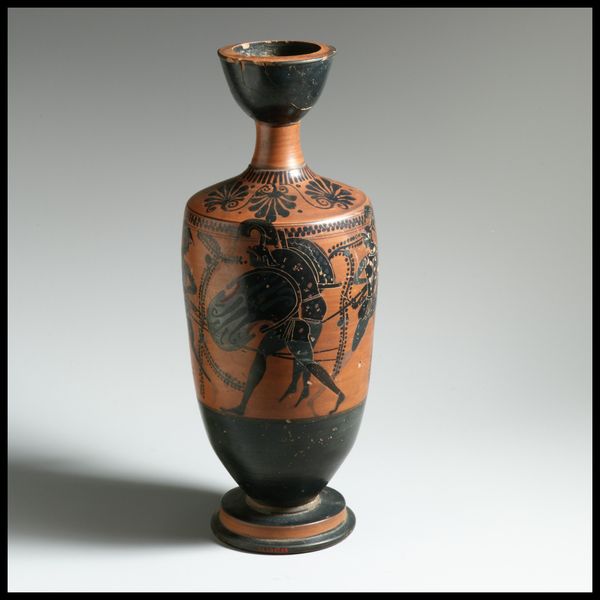
ceramic, earthenware
#
narrative-art
#
greek-and-roman-art
#
ceramic
#
figuration
#
earthenware
#
ancient-mediterranean
#
ceramic
#
earthenware
Dimensions: H. 10 15/16 in. (27.8 cm); diameter of foot 3 1/16 in. (7.7 cm)
Copyright: Public Domain
Curator: Let's discuss this terracotta oinochoe, or jug, an exquisite example of Athenian pottery dating back to 515 BC, belonging to the Altenburg Class. You'll find it at the Metropolitan Museum. Editor: Instantly, I'm struck by how formally composed it feels, especially with those stark black figures against the warm earthenware. There's a powerful contrast that really grabs your attention. Curator: Precisely. That striking black-figure technique was at its height then. It was much more than decoration. What do you think of the scenes? Editor: Well, immediately, I'm reading into the obvious gendered undertones of the banqueting scene. Male authority projected through leisurely symposiums. Curator: Indeed, we see reclining figures attending a feast, maybe referencing the symposium. The imagery carries complex social weight of Athenian society. Editor: You can really feel that cultural imprint through its carefully designed form and meticulously painted figures. Those kinds of scenes offer a glimpse into elite masculinity. It is hard to look at now without critique. Curator: Yet, it speaks volumes about ritual, communal identity. Earthenware vessels weren't mere objects. They acted as memory objects laden with social symbolism. Editor: Definitely, there's an undeniably propagandistic quality to its symbolism. It immortalizes these events and, perhaps unwittingly, promotes this image of male dominance through artistry. Curator: Yes, it becomes this double edged mirror, right? A vessel both functional and ideological. What narratives do you believe it could generate today? Editor: This could catalyze crucial conversations about representation and gender, then and now. But also, an entry point to understand ancient economies or colonial acquisitions. Curator: It underscores how objects accumulate meaning over time, constantly reshaped by contemporary viewpoints. The symbolic gravity is immense. Editor: Right, by engaging with these artworks we can re-situate and critique them, while still respecting and appreciating what they communicate historically. It’s a potent mix.
Comments
No comments
Be the first to comment and join the conversation on the ultimate creative platform.
